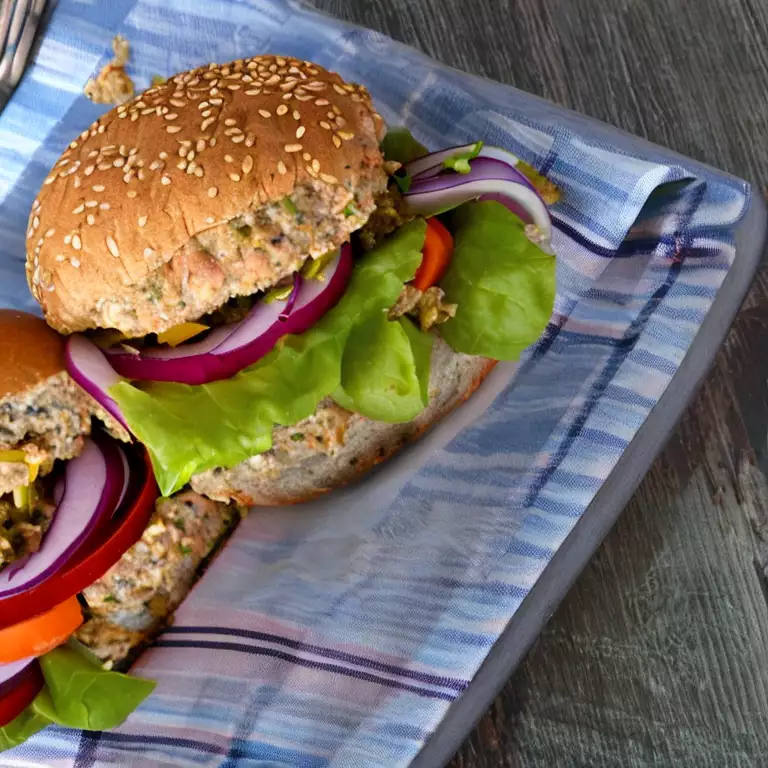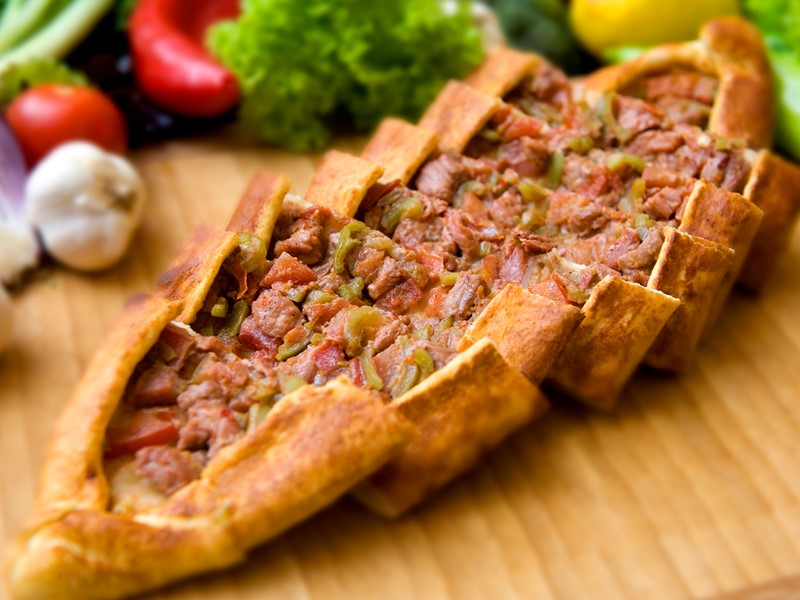How to Make Low-Cholesterol Turkish Food

Turkish cuisine is renowned for its rich flavors and hearty dishes, but did you know you can enjoy these delights without compromising your health? If you're looking to savor the taste of Turkey while keeping your cholesterol levels in check, you've come to the right place. This guide will walk you through creating low-cholesterol Turkish food, ensuring you can indulge without guilt.
Introduction
Imagine sitting at a bustling Turkish bazaar, the aroma of spices wafting through the air, and the sizzle of kebabs on the grill. Now, picture enjoying those same flavors at home, but with a healthier twist. Making low-cholesterol Turkish food is not just about cutting out fat; it's about enhancing the natural flavors of ingredients to create dishes that are both delicious and nutritious. Let's dive into the world of healthy Turkish cuisine and discover how you can transform traditional recipes into heart-healthy meals.
Understanding Low-Cholesterol Cooking
What is Cholesterol?
Cholesterol is a waxy substance found in your blood that your body needs to build healthy cells. However, high levels of cholesterol can increase your risk of heart disease. By making smart food choices, you can help manage your cholesterol levels and maintain a healthy heart.
The Basics of Low-Cholesterol Cooking
Low-cholesterol cooking involves reducing the amount of saturated and trans fats in your diet. This means opting for lean proteins, using healthier oils, and incorporating more fruits, vegetables, and whole grains into your meals. When it comes to Turkish cuisine, this approach can be easily integrated without sacrificing flavor.
Healthy Turkish Ingredients
Lean Proteins
Turkish cuisine is known for its meat-based dishes, but you can easily swap out high-fat meats for leaner options. Chicken breast, turkey, and fish are excellent choices. For vegetarians, lentils, chickpeas, and tofu can be used to create hearty, protein-rich dishes.
Healthy Fats
Olive oil is a staple in Turkish cooking and is a great source of monounsaturated fats, which can help lower cholesterol levels. Use it for sautéing, drizzling over salads, and even baking. Avoid using butter or lard, which are high in saturated fats.
Spices and Herbs
Turkish cuisine is rich in spices and herbs, which not only add flavor but also have numerous health benefits. Cumin, paprika, sumac, and mint are just a few examples. These ingredients can enhance the taste of your dishes without adding extra calories or cholesterol.
Low-Cholesterol Turkish Recipes
Grilled Chicken Shish Kebab

Ingredients:
- 500g boneless, skinless chicken breast
- 2 tbsp olive oil
- 1 tbsp lemon juice
- 1 tsp paprika
- 1 tsp cumin
- 1 tsp garlic powder
- Salt and pepper to taste
- Wooden skewers
Instructions:
- Cut the chicken into cubes and place them in a bowl.
- In a separate bowl, mix the olive oil, lemon juice, paprika, cumin, garlic powder, salt, and pepper.
- Pour the marinade over the chicken and toss to coat evenly. Let it marinate for at least 30 minutes.
- Preheat the grill to medium-high heat.
- Thread the chicken onto the skewers and grill for about 10-12 minutes, turning occasionally, until the chicken is cooked through.
- Serve with a side of grilled vegetables and a drizzle of yogurt sauce.
Turkish Lentil Soup (Mercimek Çorbası)

Ingredients:
- 1 cup green lentils
- 1 onion, finely chopped
- 2 cloves garlic, minced
- 1 carrot, finely chopped
- 1 potato, finely chopped
- 2 tbsp olive oil
- 1 tsp cumin
- 1 tsp paprika
- 1 tsp salt
- 1/2 tsp black pepper
- 6 cups vegetable broth
- Fresh parsley for garnish
Instructions:
- Rinse the lentils and set them aside.
- In a large pot, heat the olive oil over medium heat. Add the onion, garlic, carrot, and potato. Sauté until the vegetables are softened.
- Add the lentils, cumin, paprika, salt, and pepper. Stir to combine.
- Pour in the vegetable broth and bring to a boil. Reduce the heat and let it simmer for about 20-25 minutes, until the lentils are tender.
- Use an immersion blender to partially blend the soup, leaving some texture.
- Garnish with fresh parsley and serve hot.
Turkish Stuffed Bell Peppers (Dolma)
Ingredients:
- 4 large bell peppers
- 1 cup cooked quinoa
- 1 can diced tomatoes
- 1 onion, finely chopped
- 2 cloves garlic, minced
- 1/2 cup chopped fresh parsley
- 1/4 cup chopped fresh mint
- 1 tsp cumin
- 1 tsp paprika
- 1 tsp salt
- 1/2 tsp black pepper
- 2 tbsp olive oil
Instructions:
- Preheat the oven to 375°F (190°C).
- Cut the tops off the bell peppers and remove the seeds.
- In a bowl, mix the quinoa, diced tomatoes, onion, garlic, parsley, mint, cumin, paprika, salt, and pepper.
- Stuff the bell peppers with the quinoa mixture and place them in a baking dish.
- Drizzle the olive oil over the stuffed peppers.
- Bake for about 30-35 minutes, until the peppers are tender.
- Serve hot with a side of yogurt sauce.
Tips for Healthy Turkish Cooking
Use Fresh Ingredients
Fresh ingredients not only taste better but are also more nutritious. Opt for fresh herbs, vegetables, and lean proteins to enhance the flavor and health benefits of your dishes.
Cook with Less Oil
While olive oil is a healthier option, it's still important to use it sparingly. Consider using non-stick cookware and adding a small amount of water or broth to prevent sticking.
Incorporate Whole Grains
Whole grains like quinoa, bulgur, and brown rice are excellent sources of fiber and can help lower cholesterol levels. Use them in place of refined grains in your recipes.
Experiment with Spices
Turkish cuisine is known for its rich use of spices. Don't be afraid to experiment with different combinations to create unique and flavorful dishes.
Conclusion
Cooking low-cholesterol Turkish food is not just about making healthier choices; it's about embracing the rich flavors and traditions of Turkish cuisine in a way that benefits your health. By using lean proteins, healthy fats, and an abundance of spices, you can create delicious and nutritious meals that will transport you to the bustling streets of Istanbul. So, why wait? Start exploring the world of healthy Turkish cooking today and enjoy the best of both worlds.
FAQs
What are some common Turkish spices that are good for health? Common Turkish spices that are good for health include cumin, paprika, sumac, and mint. These spices not only add flavor but also have numerous health benefits.
Can I use vegetable oil instead of olive oil in Turkish recipes? While you can use vegetable oil, olive oil is a healthier option due to its monounsaturated fats, which can help lower cholesterol levels.
What are some low-cholesterol alternatives to traditional Turkish desserts? You can make healthier versions of traditional Turkish desserts by using natural sweeteners like honey or dates, and opting for low-fat dairy products or plant-based alternatives.
How can I make Turkish bread healthier? To make Turkish bread healthier, you can use whole grain flour instead of refined flour and reduce the amount of oil or butter used in the recipe.
Are there any low-cholesterol options for Turkish coffee? Turkish coffee is naturally low in cholesterol, but you can make it even healthier by avoiding added sugar and using low-fat or plant-based milk if you prefer it with milk.


Belum ada Komentar untuk "How to Make Low-Cholesterol Turkish Food"
Posting Komentar